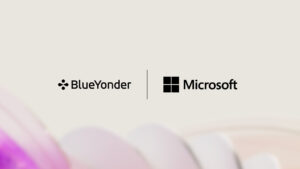Beyond EMRs: What’s next for health IT?

In October, I had the pleasure of speaking at the Cleveland Clinic Medical Innovation Summit. Titled “Memory. Mood. Movement,” and focusing on the future of neurosciences and the overall state of healthcare innovation, it was an incredible learning and sharing experience.
Many of the discussions during the conference were about the role of the EMR and the future direction of the health industry. The general consensus was that EMR systems are foundational, rather than transformational. They are an important step in digitizing health but they are just the beginning.
Health leaders are now thinking beyond their EMR to the next phase of health IT. This post-EMR phase is commonly being referred to as “the second race.”
So what is this second race? It’s really about moving from foundational technologies that replicate existing processes in healthcare to transformational technologies that enable entirely new ways of doing things—technologies that will help the health system evolve to a more proactive and predictive approach.
It was very satisfying to hear presenters and participants at the conference identify key areas for the second race that are in alignment with our focus here at Microsoft:
Increasing collaboration among health professionals. Caregiver teamwork has always been important, but it’s even more vital as health services delivery becomes increasingly multidisciplinary. Check out this recent blog that highlights a couple of examples of just how today’s cloud and mobile technologies are enabling healthcare professionals to work together in real time.
Gaining meaningful insight from data. Today’s advanced health analytics in the cloud can empower people to glean actionable and predictive insights from the vast amount of data in the health industry and beyond to improve the quality and efficiency of care. Read about what a Brazilian hospital is doing to reduce length of stay and how European health systems are transforming healthcare with advanced analytics.
Enabling virtual care. By virtual care, I mean not just telemedicine but a plethora of new ways that technologies can enable health organizations to provide care and follow up with patients anywhere, anytime. Health systems are evolving to provide people with personal health interactions more proactively and consistently. A couple of examples are described in this blog post.
What’s more, when all three of these key areas come together, healthcare can be approached more holistically. One of the many interesting topics of discussion at the conference was around the need to not just treat people’s conditions, but help them manage their overall health—and the interdependencies of physical health and mental health. For example, helping people prevent Alzheimer’s disease means encouraging them to exercise and meditate regularly. Finding ways to inform and empower people to take better care of themselves is part of what the next phase in health IT will involve.
I couldn’t be more excited about where we’re headed in health and technology. We’re on the threshold of incredible transformation. I look forward to seeing it unfold with innovative new ways to make a real impact for better health.
How are you using technology to transform healthcare? Let us know via email, Facebook, or Twitter. And please also reach out with any questions or comments.




